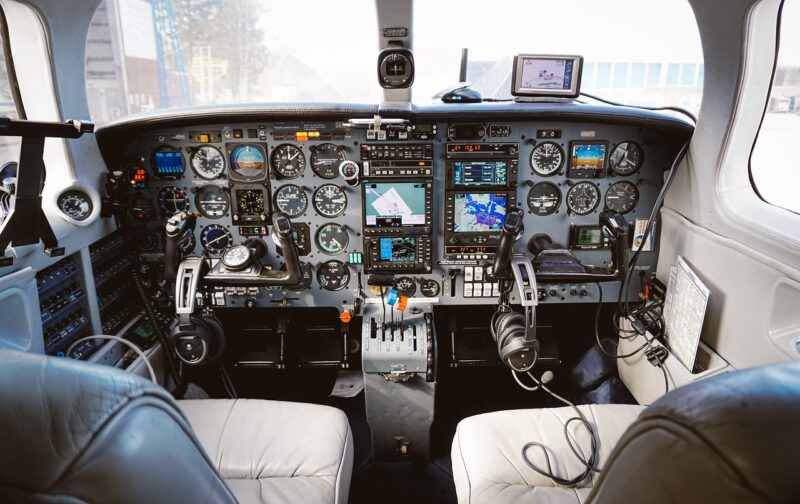The Science of Cabin Pressure: How Planes Keep You Comfortable at 35,000 Feet
November 12, 2024

When you step onto an airplane and settle into your seat, one of the key elements to your overall comfort is often taken for granted: cabin pressure. The science of cabin pressure plays a crucial role in ensuring that passengers remain comfortable during high-altitude flights. Have you ever wondered how aircraft manage to maintain a stable and breathable environment at cruising altitudes of 35,000 feet while also safeguarding against the adverse effects of low atmospheric pressure? In this article, we’ll delve into the intricacies of cabin pressure, exploring the science behind it, how it affects our bodies, and the engineering marvels that make it all possible.
1. Understanding Atmospheric Pressure at Altitude
At sea level, atmospheric pressure is approximately 14.7 psi (pounds per square inch). This pressure is essential for our respiratory systems, enabling us to breathe comfortably. However, as altitude increases, atmospheric pressure decreases significantly. At cruising levels of 35,000 feet, the pressure can drop to about 4.2 psi, which is insufficient for human survival without supplemental oxygen.
The reduction in pressure at high altitudes can lead to various physiological effects on the body, including:
- Hypoxia: A condition where the body or a region of the body is deprived of adequate oxygen supply. Symptoms can include headaches, dizziness, and weakness.
- Decompression Sickness: Also known as “the bends,” this condition occurs when nitrogen bubbles form in the bloodstream due to rapid decreases in pressure.
- Ears Popping: The pressure difference between the inside of the ear and the outside environment can cause discomfort or muffled hearing as the body tries to equalize pressure through the Eustachian tubes.
In response to these challenges, aircraft provide cabin pressure that mimics the atmospheric conditions at lower altitudes, typically around 6,000 to 8,000 feet, enhancing passenger comfort and safety.
2. The Mechanics of Cabin Pressurization
Modern jet aircraft are engineered with sophisticated systems designed to pressurize the cabin effectively. Here’s how it works:
- Air Supply: The primary source of air for the cabin is bleed air, which is taken from the engines’ compressors. This air is compressed, heated, and delivered to the cabin.
- Pressure Control Systems: These advanced systems regulate the amount of cabin air, ensuring that the pressure is maintained at the desired level. Sensors continuously monitor cabin pressure, and if the cabin begins to lose pressure, systems will automatically adjust the amount of bleed air supplied.
- Safety Protocols: In case of a sudden loss of cabin pressure, masks drop down for rapid deployment of supplemental oxygen. This ensures passengers receive enough oxygen to breathe comfortably until the aircraft descends to a lower altitude where normal breathing resumes.
The pressurization system is a combination of mechanical engineering and software, allowing pilots to have control over cabin pressure settings throughout the flight.
3. The Effects of Cabin Pressure on Passengers
While the systems work to keep the cabin environment stable, it’s important to understand how cabin pressure affects passengers:
- Comfort Levels: By maintaining cabin pressure comparable to lower altitudes, airlines can help passengers avoid the common discomforts of flying, such as headaches and fatigue, thus making for a more pleasant experience.
- Humidity Considerations: Airplanes often have lower humidity levels, around 10-20%, compared to typical indoor environments. This can lead to dryness in skin and respiratory passages. Some airlines combat this by using advanced air-filtration systems that increase humidity while maintaining clean air supplies.
- Noise Reduction: Enhanced soundproofing in modern aircraft also plays a role in overall passenger comfort. Maintaining a steady and maintained cabin pressure has the added benefit of minimizing noise from engine vibrations and external disturbances.
Understanding these factors can help travelers prepare for long flights by staying hydrated and moving regularly to promote circulation.
4. Engineering Innovations in Cabin Pressurization
Advancements in technology continue to transform how cabin pressurization systems operate:
- Digital Monitoring Systems: Modern aircraft are equipped with digital monitoring systems that provide real-time data on cabin pressure, allowing for more precise control and management of pressure levels throughout various stages of flight.
- Noise Reduction Technologies: New materials and designs in aircraft construction significantly reduce cabin noise, contributing to better passenger comfort overall, which relates back to how pressurization systems interact with sound dynamics within the cabin.
- Increased Automation: Automation in cabin pressure management allows for more efficient operations, helping to maintain consistent pressure levels seamlessly during flight phases, such as ascent and descent.
As engineering continues to evolve, future aircraft may offer even more improvements in comfort levels related to cabin pressure.
5. Conclusion: The Comfort of Modern Aviation
The science of cabin pressure is a testament to the fascinating engineering that goes into modern aviation. With technology ensuring a stable, breathable environment at altitudes that would otherwise render us uncomfortable or worse, air travel has become one of the safest and most accessible modes of transportation. Understanding how cabin pressure works not only enhances our appreciation for those behind the scenes but also equips us, as passengers, with knowledge to make our flying experiences more pleasant.
Next time you buckle your seatbelt at 35,000 feet, take a moment to appreciate the intricate systems working tirelessly to let you breathe easily and arrive safely at your destination.







